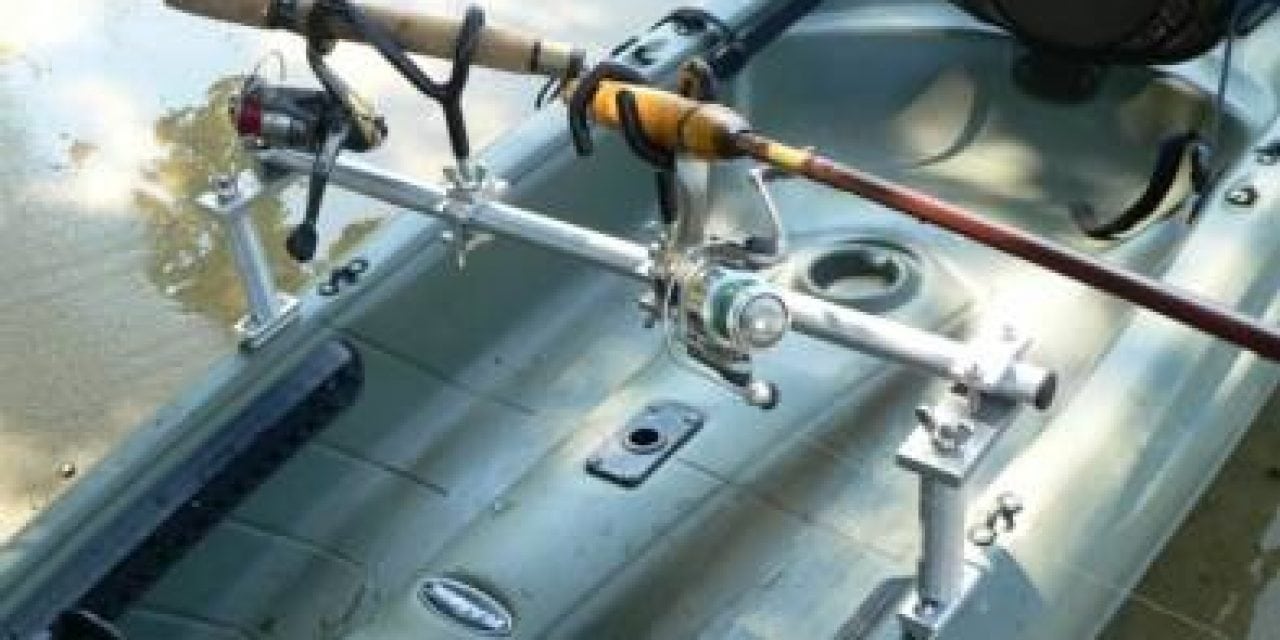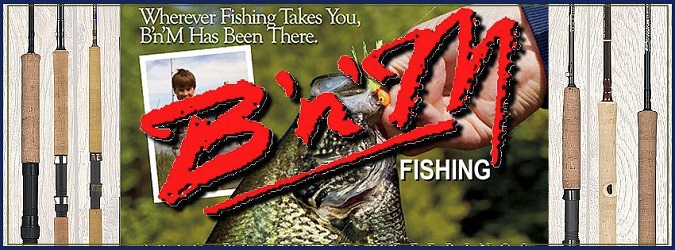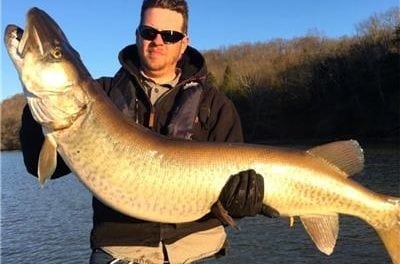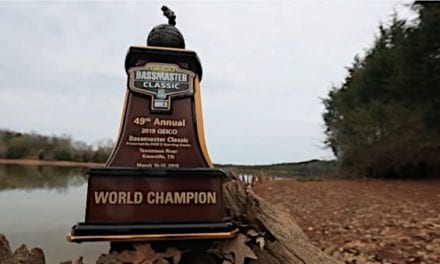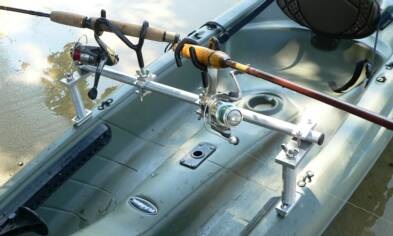 With the mostly mild winter conditions this year and the arrival of spring on the horizon, many crappie anglers are itching to get out and catch some slab crappie. At this time of year, crappie transition from being a deeper, mostly open water fish to a shallow water, cover filled jungler loving fish.
With the mostly mild winter conditions this year and the arrival of spring on the horizon, many crappie anglers are itching to get out and catch some slab crappie. At this time of year, crappie transition from being a deeper, mostly open water fish to a shallow water, cover filled jungler loving fish.
Frequently, the places you’d really like to fish for crappie are some of the hardest areas to get a boat into. It’s for this reason that the kayak fishing boom of recent years has not been lost on many of the B’n’M crappie fishing pros.
“I can put my kayak in anywhere on this lake” said Crappie pro Ronnie Capps, referring to springtime on Reelfoot Lake. “I strap it on the rear rack of my 4 wheeler and use a number of old logging roads to get down to wherever the water has come up to—the same way the guys who wade fish do.”
Early in the month, crappie will be moving along traditional routes on their way to spawning grounds. Spawning will begin to take place by the end of the month and into April. One of the best ways to catch crappie during the pre-spawn migration is by trolling. This equates to a multiple rod approach, either pushing baits forward or pulling them behind the boat. For this your kayak needs rod holders.
Rod holders can be positioned either along each gunnel or across the front. Rigging for tight lining, or spider rigging, allows the angler to push baits forward, using 12 – 14 foot B’n’M BGJP rods to dangle the bait out in front of the boat.
“We have designed rod holder systems for kayaks that lets you tight line or long line troll from the kayak same as you would from a power boat,” said Driftmaster owner David Baynard.
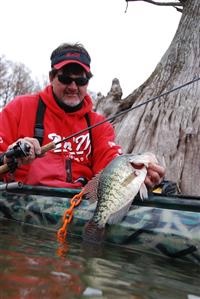
If using a paddle versus a pedal-driven kayak, be sure to allow room on each side for the paddle to clear without hitting the rods. Typical tight lining speeds are slow, less than 1 mph, so a deep, easy paddle stroke is sufficient to propel the boat.
The same rod holder set-up also needs to be adjustable to spread the rods to each side for trolling behind the boat (long lining). Make sure rods extend far enough to the right and left so you aren’t paddling into your lines. Another good tip is to stagger the lengths of the rods, eg 12 foot, 9 foot, and 6 foot per side so that lines are spread out and angle each rod holder successively going from higher to lower so one rod does not bend back into the next rod when a fish is on.
Once crappie move to the backs of creeks to spawn, it’s time to ditch the multiple rods and go with one jigging or shooting rod. That dead-end cut that was full of undergrowth last summer will now be full of water, and crappie. A roadway that crosses a culvert between the main lake and one of these sloughs will be an excellent place to dump a kayak off the top of the car or back of the truck to fish an area no power boat can reach.
“There are areas in the drainage creeks are so shallow you can’t get an outboard in there but the one man boat slides right through,” said B’n’M pro staffer Whitey Outlaw. “Not only that but sometimes the bigger spawning fish will be on nests that are only a foot deep and I can ease up within a pole length using and pick them off.”
Use your sonar, map, or other topographical media to determine the old creek or ditch path and dip a crappie jig around every piece of visible cover on the edge of the channel. Outlaw’s favorite is to hold a 9 foot Santee Elite jig pole with 6 – 8 pound test line and a 1/16 ounce jig in one hand and use a small, one hand paddle to scull along the vegetation with the other.
For water bodies where crappie utilize boat docks to spawn, a kayak makes an excellent assault vehicle for shooting docks. A low trajectory is required to skip the jig into the back recesses of the structure and its hard to get any closer to the water than sitting in a kayak.
Make sure to work systematically around the boat dock, shooting to all corners and the flat area where the walkway meets the dock. Unlike, winter, summer and fall, there won’t be much need to let the jig fall as a crappie will attack the jig once it enters it’s territorial space. A 1/32 ounce jig head with a rubber body and marabou tail paired with B’n’M’s new Sharp Shooter Six are great choices for shooting docks.
No matter what kind of boat you use or how you fish for crappie, B’n’M Poles has got you covered with the most innovative crappie rods on the market. All designed to help you catch more fish. Check out our catalog at www.bnmpoles.com
Story by Phillip Gentry
The post Catch More Crappie And Use A Kayak appeared first on ODU Magazine-North America's #1 Digital Fishing Magazine.

